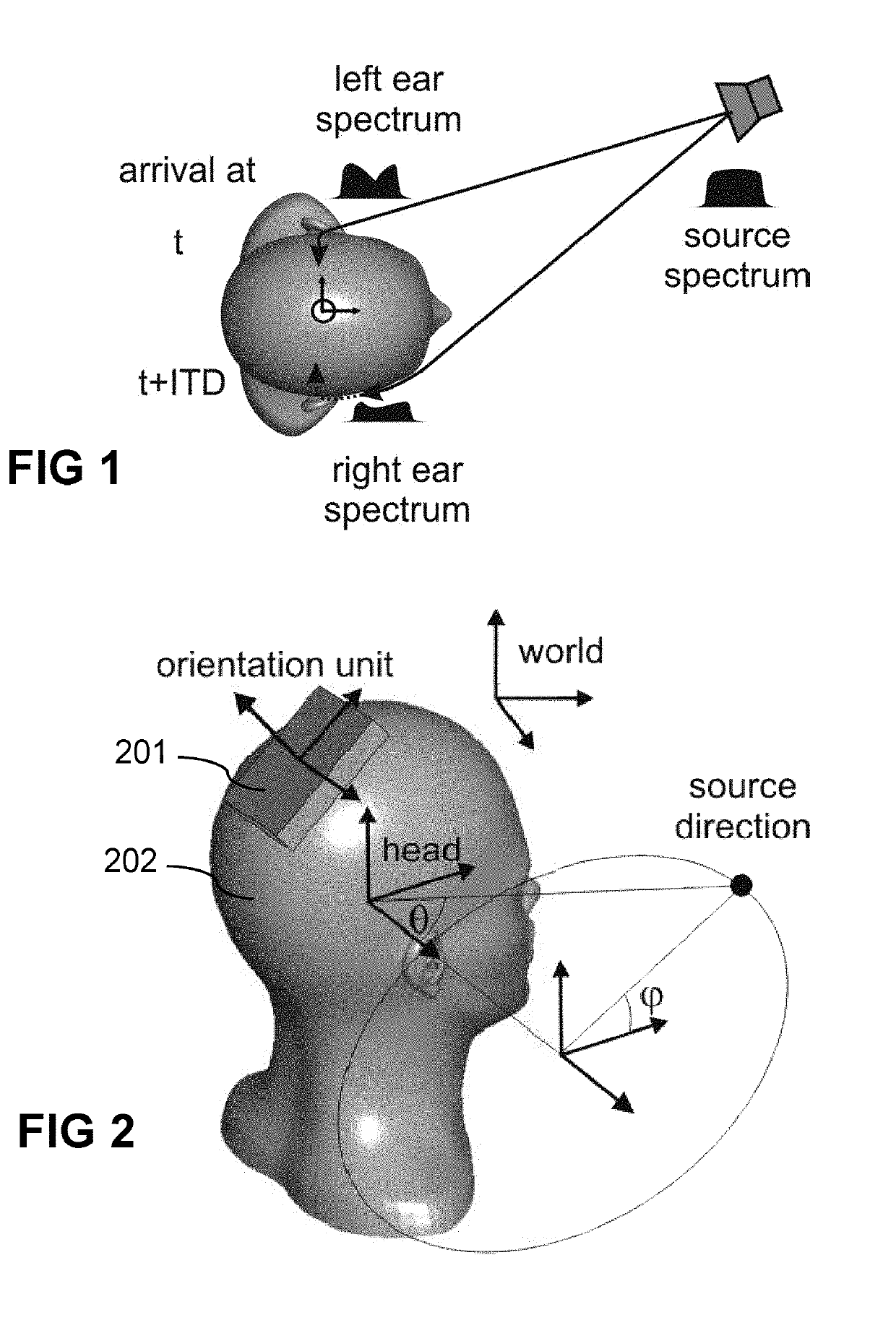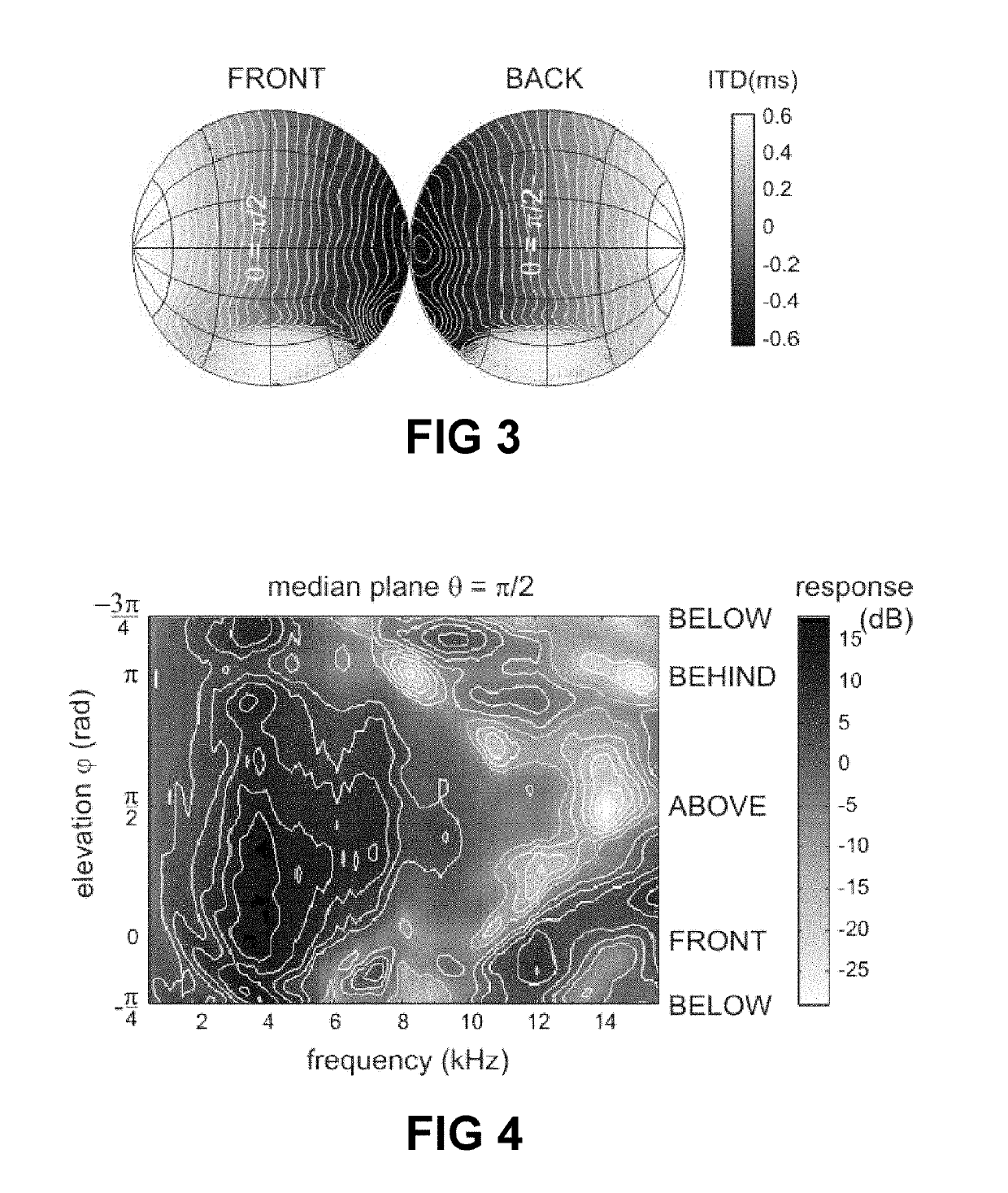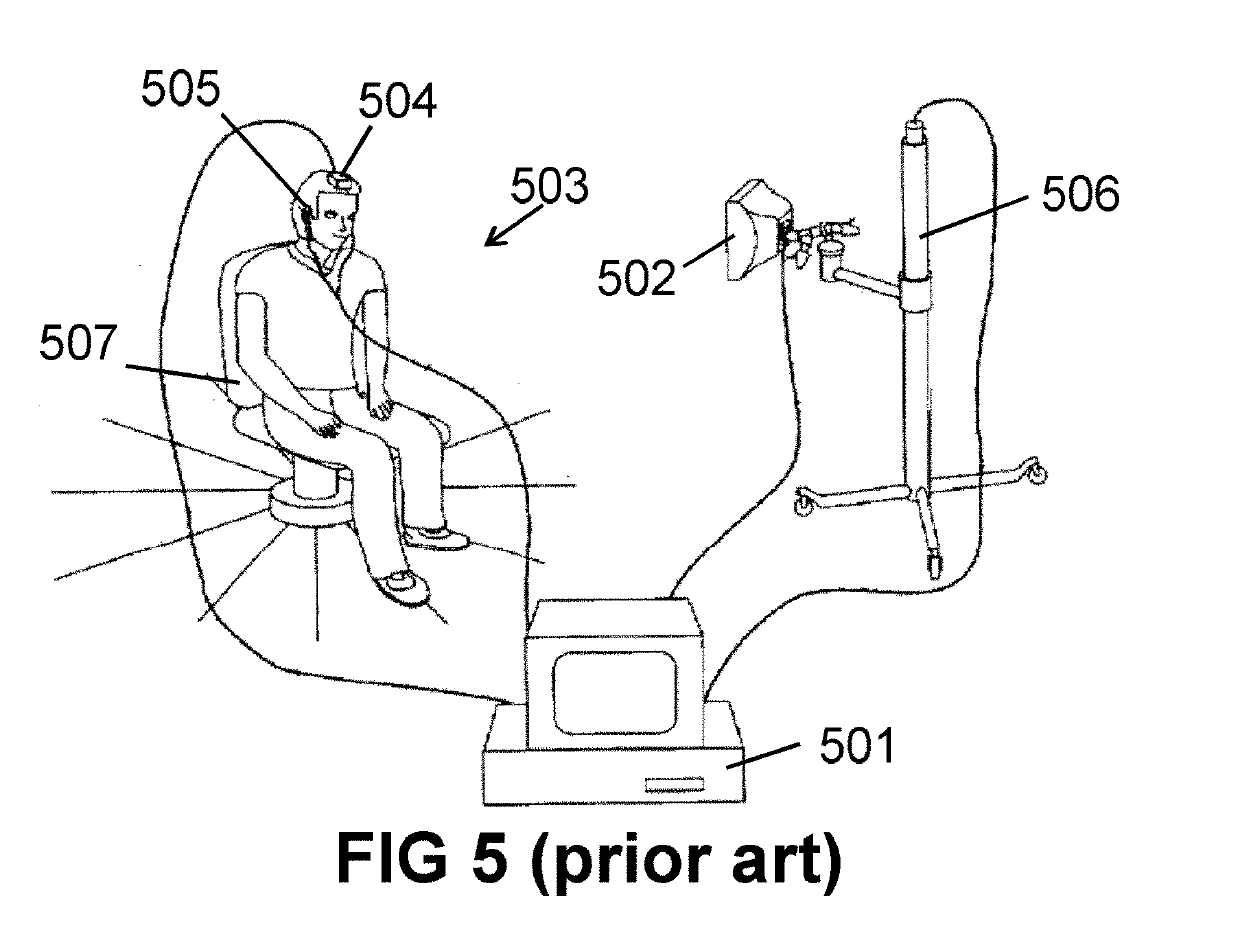Method of determining a personalized head-related transfer function and interaural time difference function, and computer program product for performing same
a transfer function and interaural time difference technology, applied in the field of 3d sound technology, can solve the problems of large errors, not widely used, and the problem of 3d-audio is much more sever
- Summary
- Abstract
- Description
- Claims
- Application Information
AI Technical Summary
Benefits of technology
Problems solved by technology
Method used
Image
Examples
first embodiment
[0303]FIG. 10 is a flow-chart representation of a method 1000 according to the present invention. For illustrative purposes, in order not to overload FIG. 10 and FIG. 11 with a large amount of arrows, this flow-chart should be interpreted as a sequence of steps 1001 to 1005, step 1004 being optional, with optional iterations or repetitions (right upwards arrow), but although not explicitly shown, the data provided to a “previous” step is also available to a subsequent step. For example the orientation sensor data is shown as input to block 1001, but is also available for block 1002, 1003, etc. Likewise, the output of block 1001 is not only available to block 1002, but also to block 1003, etc.
[0304]In step 1001 the smartphone orientation relative to the world (for example expressed in 3 Euler angles) is estimated for each audio fragment. An example of this step is shown in more detail in FIG. 13. This step may optionally take into account binaural audio data to improve the orientatio...
embodiment 1000
[0309]An example of this embodiment 1000 will be described in the Appendix.
[0310]The inventors are of the opinion that both the particular sequence of steps (for obtaining the sound direction relative to the head without actually imposing it or measuring it but in contrast using a smartphone which can moreover be oriented in any arbitrary orientation), as well as the specific solution proposed for step 1002 are not trivial.
second embodiment
[0311]FIG. 11 is a variant of FIG. 10 and shows a method 1100 according to the present invention. The main difference between the method 1100 of FIG. 11 and the method 100 of FIG. 10 is that step 1102 may also take into account a priori information of the smartphone position / orientation, if that is known. This may allow to estimate the sign of the source already in step 1102.
[0312]Everything else which was mentioned in FIG. 10 is also applicable here.
[0313]FIG. 12 shows a method 1200 (i.e. a combination of steps) which can be used to estimate smartphone orientations relative to the world, based on orientation sensor data and binaural audio data, as can be used in step 1001 of the method of FIG. 10, and / or in step 1101 of the method of FIG. 11.
[0314]In step 1201 sensor data is obtained or readout or otherwise obtained from one or more sensors of the orientation unit, for example data from a magnetometer and / or data from an accelerometer and / or data from a gyroscope, and preferably al...
PUM
 Login to View More
Login to View More Abstract
Description
Claims
Application Information
 Login to View More
Login to View More - R&D
- Intellectual Property
- Life Sciences
- Materials
- Tech Scout
- Unparalleled Data Quality
- Higher Quality Content
- 60% Fewer Hallucinations
Browse by: Latest US Patents, China's latest patents, Technical Efficacy Thesaurus, Application Domain, Technology Topic, Popular Technical Reports.
© 2025 PatSnap. All rights reserved.Legal|Privacy policy|Modern Slavery Act Transparency Statement|Sitemap|About US| Contact US: help@patsnap.com



